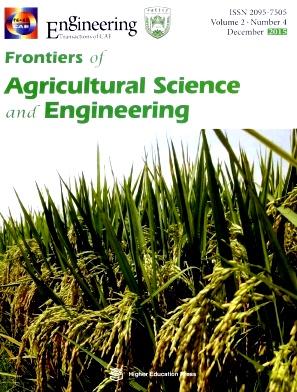NEW ZEALAND DAIRY FARM SYSTEMS AND KEY ENVIRONMENTAL EFFECTS
IF 3.6
4区 农林科学
Q1 AGRONOMY
引用次数: 3
Abstract
This paper provides an overview of the range of dairy pasture grazing systems used in New Zealand (NZ), the changes with increased inputs over time and associated key environmental effects including nitrogen (N) leaching and greenhouse gas (GHG) emissions. NZ dairy farming systems are based on yearround grazing and seasonal milk production on perennial ryegrass/clover pasture where cows are rotationally grazed in paddocks. There was an increase in stocking rate on NZ dairy farms from 2.62 cows ha – 1 in 2000/2001 to 2.85 cows ha – 1 in 2015/2016. During the same period annual milk solids production increased from 315 to 378 kg$yr – 1 per cow. This performance has coincided with an increase in N fertilizer use (by e 30%) and a twofold increase in externallysourced feeds. Externally-sourced feeds with a low protein concentration (e.g., maize silage) can increase the efficiency of N utilization and potentially reduce N losses per unit of production. Off-paddock facilities (such as standoff or feed pads) are often used to restrict grazing during very wet winter conditions. A systems analysis of contrasting dairy farms in Waikato (largest NZ dairying region) indicates that the increased input would result in an increase in per-cow milk production but little change in efficiency of milk production from a total land use perspective. This analysis also shows that the increased inputs caused an 11% decrease in N footprint (i.e., N emissions per unit of milk production) and a 2% increase in C footprint (i.e., greenhouse gas (GHG) emissions per unit of新西兰奶牛场系统和关键环境影响
本文概述了新西兰(NZ)使用的奶牛牧场放牧系统的范围,随着时间的推移增加投入的变化以及相关的关键环境影响,包括氮(N)淋滤和温室气体(GHG)排放。新西兰的奶牛养殖系统以常年放牧和季节性牛奶生产为基础,在多年生黑麦草/三叶草牧场上,奶牛在围场中轮流放牧。新西兰奶牛场的放养率从2000/2001年的2.62头奶牛ha - 1增加到2015/2016年的2.85头奶牛ha - 1。在同一时期,每头奶牛的年乳固体产量从315公斤增加到378公斤。与此同时,氮肥用量增加了30%,外源饲料用量增加了两倍。低蛋白质浓度的外源饲料(如玉米青贮饲料)可以提高氮的利用效率,并有可能减少单位产量的氮损失。在冬季非常潮湿的情况下,围场外的设施(如围栏或饲料垫)通常用于限制放牧。对怀卡托(新西兰最大的奶牛场)奶牛场的对比系统分析表明,从土地利用总量的角度来看,增加的投入将导致每头奶牛的牛奶产量增加,但牛奶生产效率几乎没有变化。该分析还表明,投入增加导致氮足迹(即每单位牛奶产量的氮排放量)减少11%,碳足迹(即每单位牛奶产量的温室气体(GHG)排放量增加2%
本文章由计算机程序翻译,如有差异,请以英文原文为准。
求助全文
约1分钟内获得全文
求助全文
来源期刊
CiteScore
5.10
自引率
2.70%
发文量
33
期刊介绍:
Frontiers of Agricultural Science and Engineering (FASE) is an international journal for research on agricultural science and engineering. The journal’s aim is to report advanced and innovative scientific proceedings in agricultural field including Crop Science, Agricultural Biotechnology, Horticulture, Plant Protection, Agricultural Engineering, Forestry Engineering, Agricultural Resources, Animal Husbandry and Veterinary Medicine, Applied Ecology, Forestry and Fisheries. FASE is committed to provide a high level scientific and professional forum for researchers worldwide to publish their original findings and to utilize these novel findings to benefit the society.

 求助内容:
求助内容: 应助结果提醒方式:
应助结果提醒方式:


